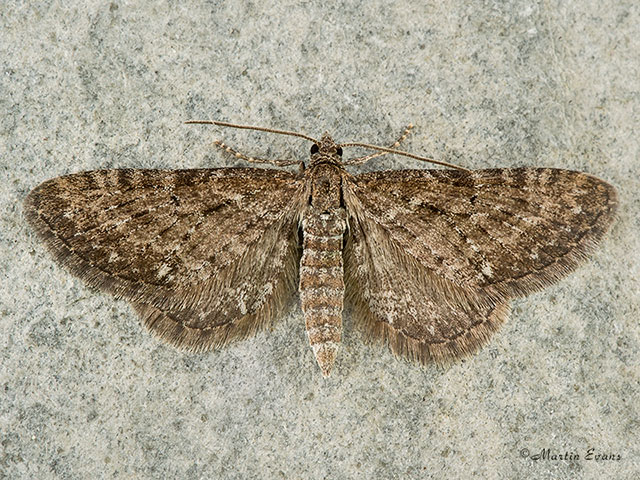Geometridae
70.177 Satyr Pug Eupithecia satyrata satyrata (Hübner, [1813])
Local
Eupithecia satyrata curzoni Gregson, 1884
Widespread on Shetland and possibly Orkney
Similar species: The moth has a fairly straight edge to the forewing with only a tiny central dash and white dots near the outer edge. The wings have chequered veins. It has no dark band on the thorax. These characters should serve to identify it. If unsure check the genitalia.
Forewing: 9 to 13mm
Habitats: Mountain moorland, upland grassland and other upland habitats. Calcareous downland, heathland, marshes, fens, rough grassland and open woodland clearings.
Habits: In upland habitats the moth commonly flies in warm afternoon sunshine. In lowland habitats it is usually only seen at light.
Foodplant: The flowers of knapweeds, hawkweeds, Heather, Cross-leaved Heath, thymes, ragworts, Meadowsweet, Devil's-bit Scabious, Stork's-bill and other herbaceous plants. It has also been recorded on the fresh shoots of Sitka Spruce and Lodgepole Pine.
On the European mainland it also feeds on Yarrow, thistles, Ribwort Plantain, Selfheal and Wood Cow-wheat.


